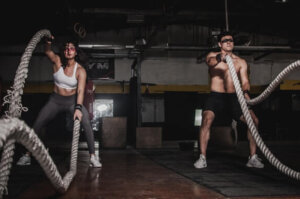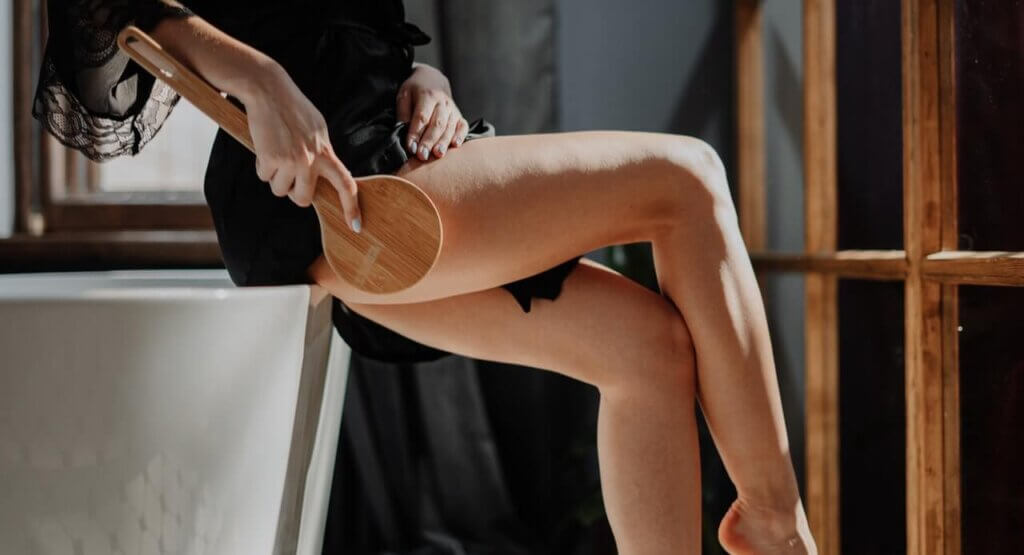What actually IS cellulite?
We all know what cellulite looks like, but what is it exactly?
Cellulite appears when fat deposits make their way up through the connective tissue under your skin. It doesn’t discriminate between men and women, old and young though it is more commonly seen in women, as the fibrous bands of their connective tissues don’t overlap as much to provide support under the skin.
Women’s hormones and higher body fat levels are also a factor. You can even get cellulite if you’re skinny, as any amount of fat protrudes out from the connective tissue – genetics is alas, a factor.
Diet & Cellulite
They say that a healthy lifestyle is 80% exercise and 20% of what you eat. No matter how much exercise you do, if your diet is comprised of the wrong foods, you’ll be taking one step forwards and two steps back.
Here are a few examples of foods that will help keep cellulite at bay and why:
- Asparagus: rich in folic acid which can help to reduce stress levels. Intense stress can increase fat storage in the body, so eating foods that counter this will stop your body from clinging to fat.
- Berries: berries like cranberries, blueberries and raspberries will help to trigger your lymphatic system (the network of tissues that help the body get rid of waste) to break down toxins that are otherwise deposited around the body, across cellulite-prone areas. Berries are also packed with vitamin C, which helps to increase collagen levels, helping your skin stay tight and smooth.
- Leafy greens: there’s a reason why Popeye eats his spinach around the clock. Leafy greens like spinach, kale and cabbage contain an antioxidant known as lutein which helps encourage circulation around the body and helps skin retain its moisture and elasticity.
Does Exercise Help Cellulite?
Exercise will help to keep body fat levels low, improve muscle tone in cellulite-susceptible areas and improve your circulation.
The latter is particularly important, as circulation maintains strong connective tissues and helps to prevent excess fluid retention which otherwise worsens the appearance of cellulite. This is a very important thing to remember to not just reduce cellulite but also stop its formation.

Choosing cardio exercises that are focus on burning body fat are the best approach, as less body fat means less cellulite. Think HIT training Joe Wicks-style and intensive sports like squash and sprints.
When it comes to strength training, exercises that build up the hamstring, quads, buttocks and hip area are key, as these tend to be the areas that cellulite loves the most, especially if you’re a woman.
Unfortunately (as mentioned above) genetics have a lot to do with the way your body stores fat and many people will reach a certain weight and body fat percentage ceiling.
Non-Surgical Treatments for Cellulite
| Treatment | Description |
| Endermologie | Massage device kneads skin to improve circulation and reduce fluid retention. |
| Radiofrequency | Heat energy tightens skin and may reduce fat cells. |
| Ultrasound | Sound waves target fat cells to break them down. |
| Cryolipolysis | Freezes fat cells, which are then naturally eliminated by the body. |
| Cellfina | Minimally invasive, releases fibrous bands causing dimples. |
| Acoustic Wave Therapy | Sound waves disrupt connective tissue and improve circulation. |
| Injectables (e.g., Sculptra) | Stimulate collagen production to improve skin texture. |
Thanks to modern technology and innovation in medical aesthetics, there are treatments that can help if you’re someone who is struggling to reduce the appearance of cellulite organically.



1 Comment
This was a great read. Other blog posts that I’ve read about cellulite, usually have said to buy different products, and half the time, they dont work! While reading this, I’ve learnt about how diet and physical activity can have an influence on cellulite. Thanks!